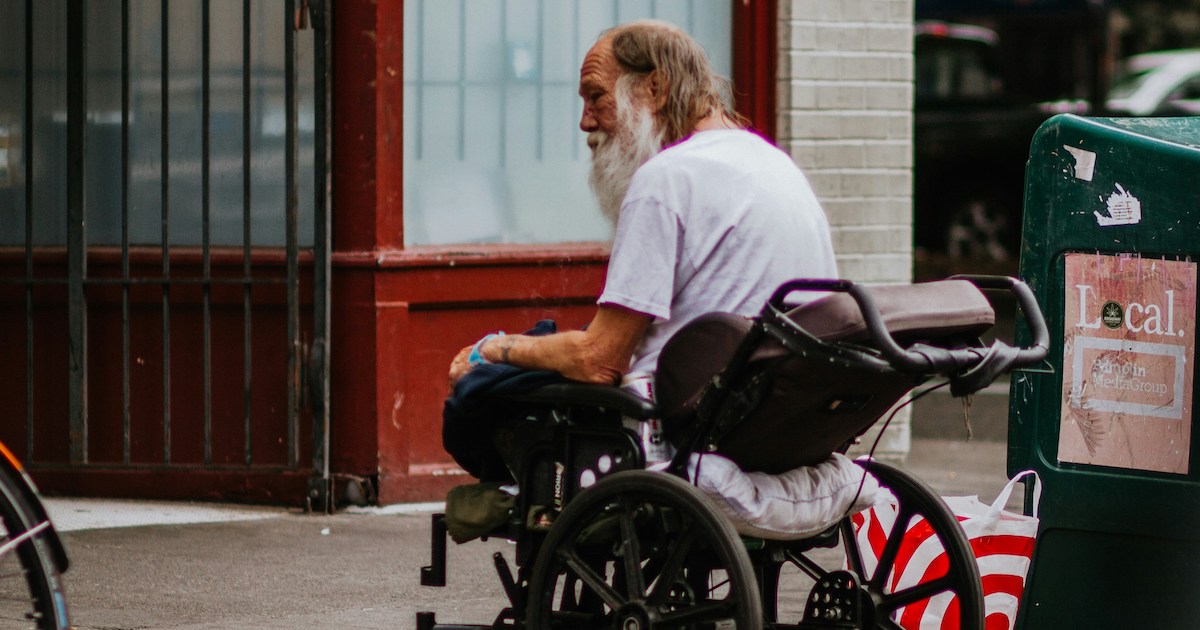June 4, 2024 Rachel Barclay and Megan Burke: Americans with disabilities are at breaking point. Are politicians listening?
“People with disabilities are at higher risk for financial hardship, homelessness, food insecurity, unsustainable medical debt, and child deprivation,” Rachel Barclay, director of Able Americans, and Megan Burke, principal at Petrizzo Group, wrote in an op-ed published in The Hill.
And while “the last century has made great strides in redressing America’s greatest inequalities,” safety net programs like Social Security and the Fair Housing Act have serious problems. Rachel and Megan argue that now is the time to find solutions that “invite people with disabilities into the promise of the American Dream.”
Read their full comments below.
The disability community has reached a tipping point and our representatives should pay attention, because the disability community may become the most underrepresented voting group in our country this election.

Rachel Berkeley
One in four adults in the United States lives with a disability, or 61 million people. That number exceeds 100 million if you include their caregivers. According to the U.S. Census Bureau, voter turnout among people with disabilities has been at an all-time high since the 2016 election, when 56% of voters with disabilities voted. In the November 2020 election, that number rose to 62%.
The disability community has never been given the same opportunities to succeed as other Americans. People with disabilities live with a host of inequities, including access to the workforce and housing, health care options, and economic stability. In a 2022 poll, only 3 in 10 disabled voters believe their leaders in Washington, DC care about them. This historic lack of support at the federal level has had dire consequences.
Today, more than 25 percent of people with disabilities in America live in poverty – more than twice the rate of people without disabilities – a problem deeply rooted in federal laws that have not been updated in over 80 years.
At the time many of these laws were enacted, people with disabilities were segregated in institutions where abuse and neglect were commonplace, or legal and physical barriers prevented them from fully participating in society. Remnants of these unequal laws remain today, making people with disabilities second-class citizens in a country that promises them inalienable rights and freedoms.
Over the past century, there has been great progress in addressing America’s greatest inequalities.
In 1927, the U.S. Supreme Court ruled in Buck v. Bell that people with disabilities could be forcibly sterilized. Thirty states had laws permitting this cruelty. Virginia’s law alone sterilized approximately 8,300 citizens, and the law was not repealed until 1974.
As recently as 1987, facilities such as Willowbrook State School in Staten Island housed people with developmental disabilities in squalid and inhumane conditions. These horrific injustices have been remedied, but the legal legacy of unequal treatment remains.
Fundamental to freedom and dignity is the ability to work and control one’s economic future. The Social Security Income program was created in 1972 to ensure that people with disabilities and others do not have to live below the poverty level. The federal poverty level is $15,060, but in 2024, annual benefits for a single person are capped at $11,321.49. Benefits begin to decrease when an individual earns more than $85 a month, and are completely canceled when savings exceed $2,000.
Instead of lifting people out of poverty, the law traps them in it with steep benefit cliffs and provisions that prohibit them from marrying or starting a family — if they earn more money, build up personal savings, or marry someone with assets or a job, they risk being cut off from the safety net altogether.
Safety nets must provide a path to work, because access to work is one of the most effective ways to reduce poverty. Yet only 40.6 percent of people with disabilities are actively participating in the labor market – almost half of people without disabilities. The unemployment rate for people with disabilities is 9.3 percent, more than double that of people without disabilities.
The Fair Housing Act of 1968 was enacted to protect people with disabilities from discrimination in government-funded housing programs and in renting, buying, and financing housing. It was strengthened in 1973 by Section 504 of the Rehabilitation Act.
Either way, less than 5 percent of homes nationwide are suitable for people with moderate mobility issues, and less than 1 percent are suitable for people who use wheelchairs.There is a growing housing shortage nationwide, currently estimated at 7 million units, which means housing is both inaccessible and expensive.
These issues are just the tip of the iceberg: People with disabilities are at higher risk for economic hardship, homelessness, food insecurity, unsustainable medical debt, and child deprivation.
To invite people with disabilities into the promise of the American Dream and rescue them from the restrictive laws of the past, we must begin difficult political conversations about potential solutions. In this election year, and in the spirit of fundamental American values, leaders of both parties would be wise to address these long-overdue reforms.
Megan Burke is president of the Petrizzo Group and a disability policy adviser. Rachel Barkley, who is disabled with a spinal cord injury, is director of Able Americans, a project of the National Center for Public Policy Research. This article first appeared in The Hill.
Cover photo by Gabe Pierce on Unsplash

